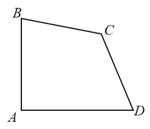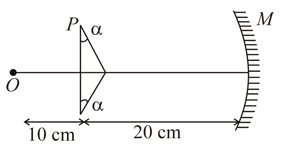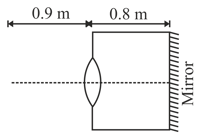In the given figure, the faces of the prism made of glass with a refractive index form dihedral angles (The Abbe's prism ). A beam of light falls on the face & after total internal reflection from face, escapes through face . Find the range of and angle of incidence of the beam onto face , if a beam that has passed through the prism in this manner is perpendicular to the incident beam.



Important Questions on Ray Optics
A point source of light is placed at a distance h below the surface of a large deep lake. (a) Show that the fraction of the light energy that escapes directly from the water surface is independent of h and is given by , where is the index of refraction of water.
(Note: Absorption within the water and reflection at the surface except where it is total, have been neglected)
(b) Evaluate this ratio for .
A glass prism with a refracting angle of has a refractive index for red and for violet light. A parallel beam of white light is incident on one face at an angle of incidence which gives minimum deviation for red light. Find:
(a) the angle of incidence
(b) angular width of the spectrum
(c) the length of the spectrum if it is focussed on a screen by lens of focal length .
In the given figure, is a point object kept on the principal axis of a concave mirror of radius of curvature . is a prism of angle . Light falling on the prism (at a small angle of incidence) gets refracted through the prism and then falls on the mirror. The refractive index of the prism is . Find the distance between the images formed by the concave mirror due to this light.

In the figure shown is a converging lens of focal length and is a concave mirror of radius of curvature . A point object is placed in front of the lens at a distance . and are optical axes of the lens and mirror respectively. Find the distance of the final image formed by this system from the optical center of the lens. The distance between is .

A thin equiconvex lens of a glass of refractive index of focal length in air is sealed into an opening at one end of a tank filled with water . On the opposite side of the lens, a mirror is placed inside the tank on the tank wall perpendicular to the lens axis, as shown in the figure. The separation between the lens and the mirror is . A small object is placed outside the tank in front of the lens at a distance of from the lens along its axis. Find the position (relative to the lens) of the image of the object formed by the system.

